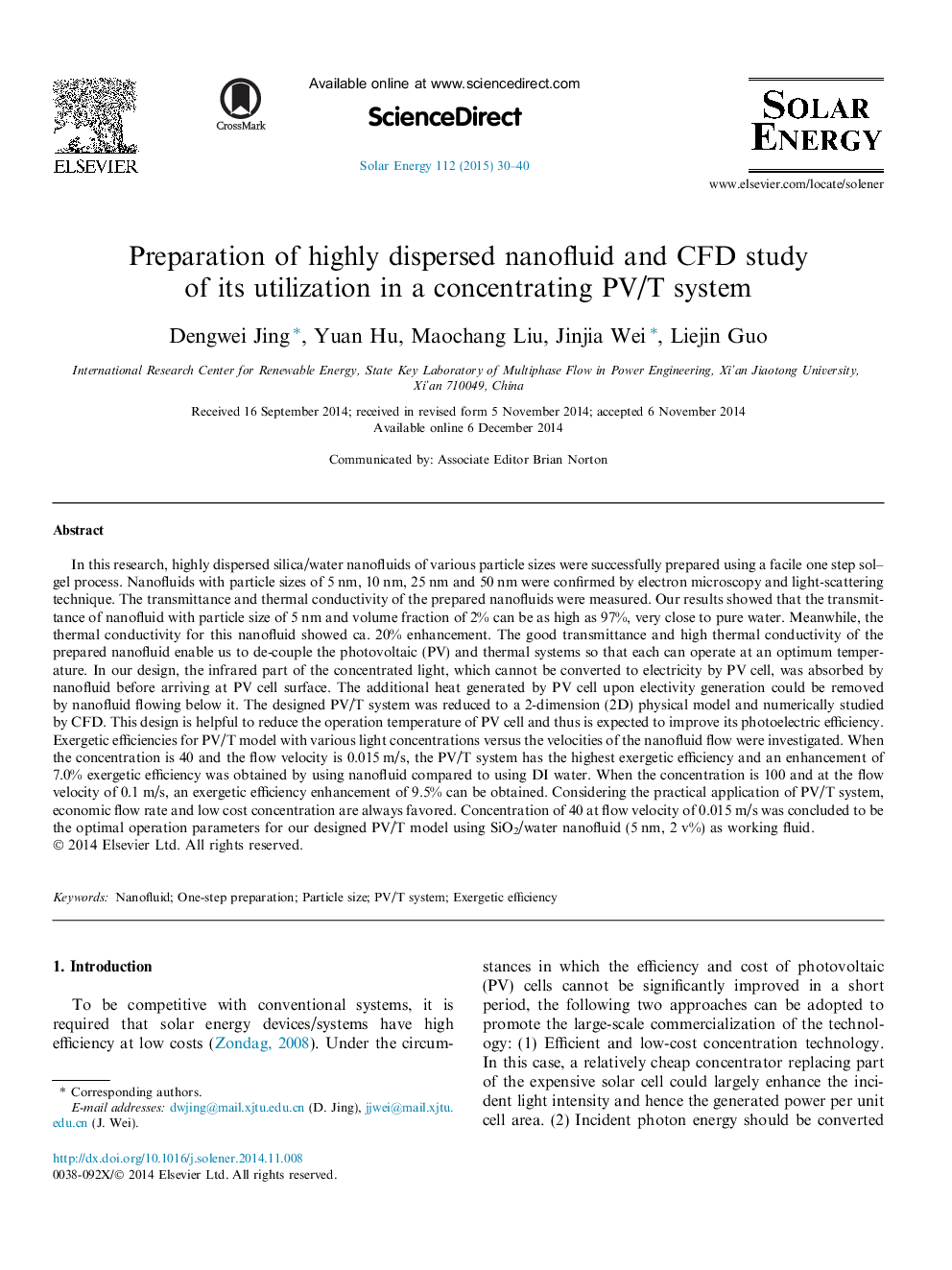| Article ID | Journal | Published Year | Pages | File Type |
|---|---|---|---|---|
| 1549746 | Solar Energy | 2015 | 11 Pages |
•Highly dispersed nanofluids of various particle sizes were successfully prepared.•Transmittance of nanofluid is very close to pure water.•The thermal conductivity for the nanofluid showed ca. 20% enhancement.•Optimal parameters for the PV/T model using prepared nanofluid were determined.•At optimal working condition, exergetic efficiency enhancement of 9.5% achieved.
In this research, highly dispersed silica/water nanofluids of various particle sizes were successfully prepared using a facile one step sol–gel process. Nanofluids with particle sizes of 5 nm, 10 nm, 25 nm and 50 nm were confirmed by electron microscopy and light-scattering technique. The transmittance and thermal conductivity of the prepared nanofluids were measured. Our results showed that the transmittance of nanofluid with particle size of 5 nm and volume fraction of 2% can be as high as 97%, very close to pure water. Meanwhile, the thermal conductivity for this nanofluid showed ca. 20% enhancement. The good transmittance and high thermal conductivity of the prepared nanofluid enable us to de-couple the photovoltaic (PV) and thermal systems so that each can operate at an optimum temperature. In our design, the infrared part of the concentrated light, which cannot be converted to electricity by PV cell, was absorbed by nanofluid before arriving at PV cell surface. The additional heat generated by PV cell upon electivity generation could be removed by nanofluid flowing below it. The designed PV/T system was reduced to a 2-dimension (2D) physical model and numerically studied by CFD. This design is helpful to reduce the operation temperature of PV cell and thus is expected to improve its photoelectric efficiency. Exergetic efficiencies for PV/T model with various light concentrations versus the velocities of the nanofluid flow were investigated. When the concentration is 40 and the flow velocity is 0.015 m/s, the PV/T system has the highest exergetic efficiency and an enhancement of 7.0% exergetic efficiency was obtained by using nanofluid compared to using DI water. When the concentration is 100 and at the flow velocity of 0.1 m/s, an exergetic efficiency enhancement of 9.5% can be obtained. Considering the practical application of PV/T system, economic flow rate and low cost concentration are always favored. Concentration of 40 at flow velocity of 0.015 m/s was concluded to be the optimal operation parameters for our designed PV/T model using SiO2/water nanofluid (5 nm, 2 v%) as working fluid.
